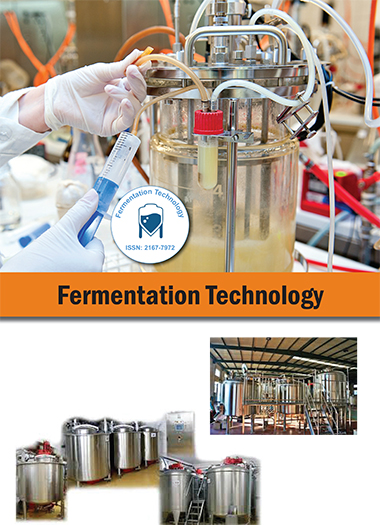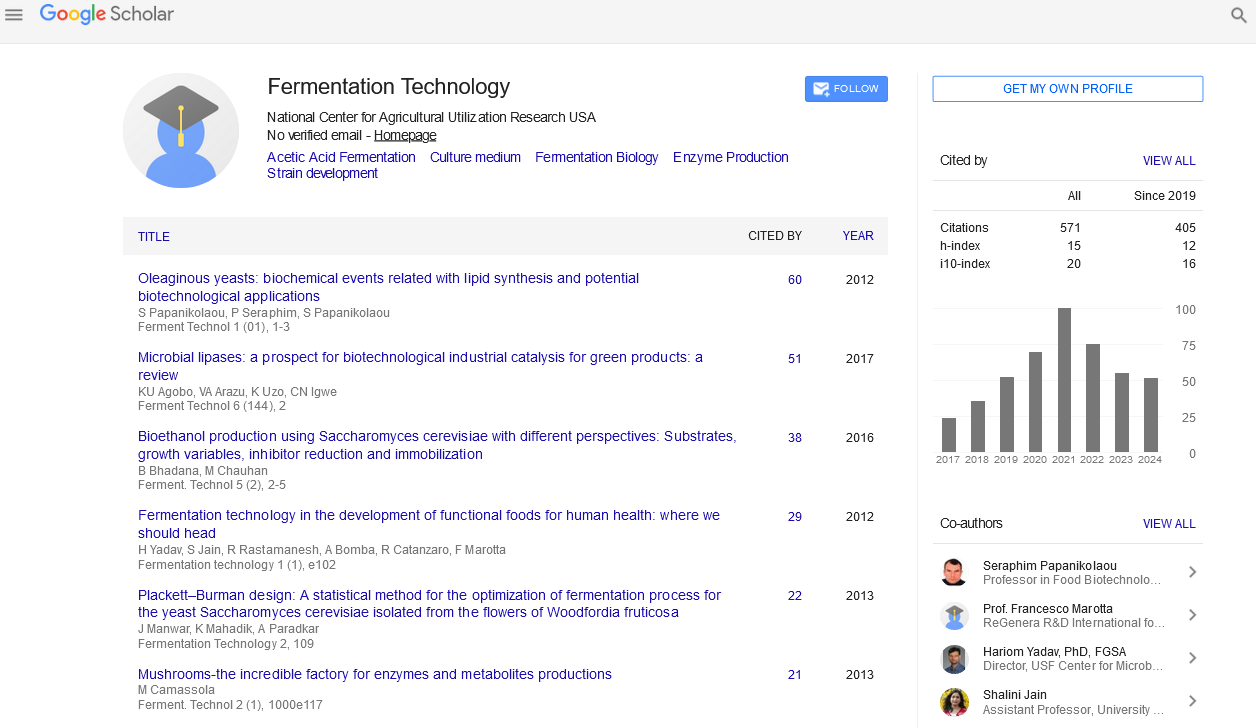Indexed In
- Open J Gate
- Genamics JournalSeek
- Access to Global Online Research in Agriculture (AGORA)
- RefSeek
- Hamdard University
- EBSCO A-Z
- OCLC- WorldCat
- Publons
Useful Links
Share This Page
Journal Flyer

Open Access Journals
- Agri and Aquaculture
- Biochemistry
- Bioinformatics & Systems Biology
- Business & Management
- Chemistry
- Clinical Sciences
- Engineering
- Food & Nutrition
- General Science
- Genetics & Molecular Biology
- Immunology & Microbiology
- Medical Sciences
- Neuroscience & Psychology
- Nursing & Health Care
- Pharmaceutical Sciences
Perspective - (2023) Volume 12, Issue 1
The Art of Bread Baking: Exploring Ingredients, Equipment and Techniques for Homemade Bread
Max Gray*Received: 03-Mar-2023, Manuscript No. FMT-23-20919; Editor assigned: 06-Mar-2023, Pre QC No. FMT-23-20919(PQ); Reviewed: 21-Mar-2023, QC No. FMT-23-20919; Revised: 28-Mar-2023, Manuscript No. FMT-23-20919(R); Published: 07-Apr-2023, DOI: 10.4172/2167-7972.23.12.162
Description
Bread is one of the oldest and most universal foods in the world, and baking bread has been an important part of human history for thousands of years. The basic ingredients for bread are simple: flour, water, yeast, and salt. However, the art of bread baking can be complex and intricate, with a wide range of techniques and styles. In this article, explore the basics of bread baking; including the ingredients, equipment, and techniques involved in making a delicious loaf of bread. The first step in bread baking is selecting the right ingredients. The most important ingredient is flour, which provides the structure and texture of the bread. There are many types of flour available, including all-purpose flour, bread flour, whole wheat flour, and many others. All-purpose flour is the most common type of flour used for bread baking. It has moderate protein content, which is important for developing the gluten in the bread dough.
Bread flour has higher protein content than all-purpose flour, which makes it ideal for bread baking. Whole wheat flour is made from the whole grain of the wheat, which provides more fiber and nutrients than refined flours. In addition to flour, bread also requires water, yeast, and salt. Water is used to hydrate the flour and activate the yeast. Yeast is a microorganism that feeds on the sugars in the flour and produces carbon dioxide, which causes the bread to rise. Salt is added for flavor and to help control the fermentation process. Bread baking requires some basic equipment, including a mixing bowl, a measuring cup and spoons, a kitchen scale, a dough scraper, and a baking sheet or loaf pan. Some bread bakers also use a stand mixer or a bread machine to mix and knead the dough. Baking stone or baking steel is also useful for bread baking. These are thick, heavy slabs of stone or steel that are preheated in the oven and used to bake the bread. They provide a more even heat distribution and can help create a crisp crust on the bread.
The process of bread baking can be broken down into several stages: mixing, kneading, rising, shaping, proofing, and baking. The first step in bread baking is mixing the ingredients together.
This can be done by hand, using a stand mixer, or a bread machine. To mix the ingredients by hand, simply combine the flour, yeast, salt, and water in a large mixing bowl and stir until a shaggy dough forms. Kneading is the process of working the dough to develop the gluten, which gives the bread its structure and texture. This can be done by hand or using a stand mixer with a dough hook attachment. To knead the dough by hand, turn the dough out onto a floured surface and press it out into a flat rectangle. Fold the dough in half and press down again, repeating this process for several minutes until the dough is smooth and elastic. After kneading, the dough is allowed to rise or ferment. This is the process where the yeast produces carbon dioxide, causing the dough to expand and rise.
The dough should be covered and left in a warm, draft-free place to rise until it has doubled in size. This can take anywhere from 30 minutes to several hours, depending on the recipe and the temperature of the room. Once the dough has risen, it is time to shape the loaf. This can be done by hand or using a loaf pan. To shape the dough by hand, turn it out onto a floured surface and gently press it out into a flat rectangle.
Citation: Gray M (2023) The Art of Bread Baking: Exploring Ingredients, Equipment and Techniques for Homemade Bread. Ferment Technol. 12:162.
Copyright: © 2023 Gray M. This is an open-access article distributed under the terms of the Creative Commons Attribution License, which permits unrestricted use, distribution, and reproduction in any medium, provided the original author and source are credited.

